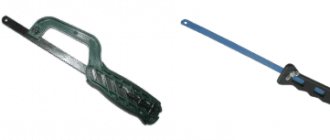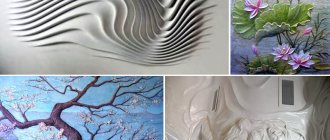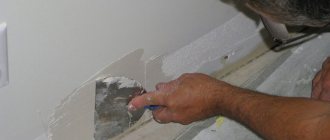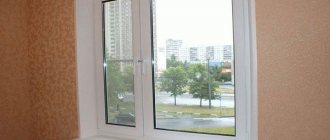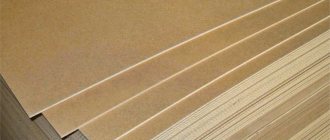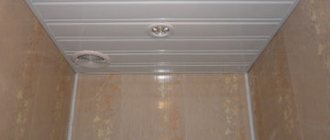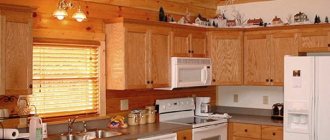How to break through a concrete wall
Concrete structures are highly durable, so drilling them yourself is quite difficult.
This is due to the fact that crushed stone is used to create concrete products, and when you come across it while drilling, the process becomes very difficult.
The need to drill a concrete wall arises quite often; this is necessary for installing shelves, cabinets, air conditioning, gluing wallpaper, attaching a lamp, when attaching insulation, or when plastering walls to attach beacons.
There are several ways to solve this problem:
- using a hammer drill or a powerful impact drill;
- an ordinary electric drill or screwdriver;
- diamond drilling.
To carry out this work, a regular drill is not suitable; it is necessary to purchase tools soldered with pobedite alloy.
It should be remembered that for walls made of relatively soft materials, it is impossible to use pobedit drills, since the holes will be uneven and the wall will collapse. It is also impossible to work with metal with such a tool.
To create large-diameter holes or cut through a doorway, diamond-coated annular drills are used. To use such a tool, it is necessary to use special installations; they allow you to make holes with a diameter of up to 250 mm.
Since the cost of such equipment is high, it is easier to hire specialists or you can rent it.
Reviews
“Correct advice about working as a hammer drill. I had such a case. Drilled concrete with a hammer drill. The drill pinched and hit my head painfully. Now I don’t put pressure on the hammer drill, I hold it in front of me, and don’t lean on it with my shoulder.” Victor, Novosibirsk
“My apartment has concrete walls. I make all the necessary holes, even very small ones, using a hammer drill, and an impact drill is a weak assistant.” Kostya V., Volgograd
“I work with a hammer drill this way. I mark a hole and drill it. The wife turns on the vacuum cleaner, and all the dust enters the vacuum cleaner bag. The only caveat is that the vacuum cleaner should not be water-powered. For 20 years there have been no problems with drilling holes in the wall.” Ludwig Goldberg, Omsk
“I worked for a long time in a company developing hydraulic tools and I can say that hydraulics is a leader in any field of construction. Those who were engaged in it will not engage in anything else.” Kuzmich Oleg, Zaraysk
Choosing a tool and working with it
When choosing a tool to drill a hole, you should understand that your work depends on it. A good drill accurately drills into a concrete wall or other required material, simplifying the drilling process, while a bad one will require a lot of time, may not cope with the task, or will complicate it. What you need to pay attention to when choosing a drill:
- Is it possible to change the drilling speed? – this point is important, since correction of the speed mode will ensure accurate operation of the drill, helping it not to damage the surface.
- Is it possible to hammer drill and adjust the depth? – impact drilling can be used on problem areas, softening them.
- Is it possible to hold the drill with both hands? – a drill is not a light tool and therefore preference should be given to models that are equipped with handles.
- Is the tool's power sufficient for your job?
Having decided on a drill, before starting work you need to get the hang of holding it. To do this, you should take the drill in one hand, like a pistol, and place the other hand on the handle of the tool (if it is not intended by the design, the hand is placed near the chuck). It is necessary to hold the drill in your hands strictly horizontally, so that the hole does not turn out distorted or at the wrong angle. Wait until the drill reaches ambient temperature before turning on the drill. Sudden temperature changes can cause condensation. If you decide to rest while working, unplug the tool.
Expert advice
In order for you to correctly drill a concrete wall, you must have the necessary equipment, perform all work carefully and adhere to the following recommendations:
- without a hammer drill, the work can be done with an impact drill or drilled with a screwdriver;
- do not buy cheap drills, as their pobedite tip falls off very quickly and they fail;
- instead of a punch, you can use a pobedit tool, with one you will break the crushed stone, and with the second, inserted into a regular electric drill, you will drill;
- to work with concrete, the hammer drill must have an SDS-plus chuck;
- take into account the placement of the reinforcement to determine where it is located, you can use a metal detector; if the reinforcement is exposed, it must be painted to prevent rusting;
- To work with concrete, you can use universal diamond-coated drills, but you need to insert them only into a regular drill, or you need to turn off the impact mode.
What will help the home handyman?
At home, when you need to make 2-3 holes in concrete, you can get by with a regular drill, without the impact function. To do this, it is necessary, as the Pobedit drill is immersed into the body of the wall, to break the concrete from time to time with a strong metal pin (punch) matching in size to the diameter of the hole. It is used when the drill begins to “stick” in the wall. At this moment, a steel punch is inserted into the hole and they begin to hit it with a hammer or sledgehammer, trying to crush areas that are too dense and punch the hole deeper. In this case, the pin is turned a little. Then the hammerless drill can start working again.
Read also: DIY table cover
All the above steps are repeated one after another until the hole increases to the required depth. This method is quite labor-intensive and tedious, but for a couple of holes it is quite acceptable.
Alternatively, when drilling a hole in concrete, you can use universal diamond-coated drills. They are highly effective when working with metal, crushed stone and concrete. They can only be installed on a conventional electric drill, or on a tool with the vibration function disabled.
You need to work with the drill extremely carefully, otherwise it will fail too quickly. The advice that professionals give is that to avoid overheating of the drill, it should be moistened with cold water from time to time.
Features of drilling holes
Concrete is a heterogeneous mass that consists of cement and sand with crushed stone mixed into it. To increase the strength of the material, metal rods are added to it.
When drilling concrete, a carbide drill attached to an electric drill often hits metal or a stone. If the tool hits a stone, the drill must be pulled out of the hole, and the stone must be crushed using a hand punch with a hammer. After this, drilling can continue.
Tip: To crush stone, you should use the shock operating mode of the equipment, replacing the carbide drill with a regular one.
Before you drill a hole in concrete, you need to choose the right tool. It depends on the:
- Types of concrete;
- Diameter of the required hole;
- Drilling depths.
To drill holes in concrete, the following devices and tools can be used:
- Electric drill or hammer drill;
- Crown;
- Boer;
- Drill;
- Punch.
Tool overview
In order to choose the right equipment for drilling holes in concrete, you should first become familiar with the most popular ones for doing work at home.
Their photos and features:
It is better if it is impact; drilling holes in concrete with a simple drill is quite difficult, and sometimes even impossible.
The table summarizes the pros and cons of the tool:
This is a more serious tool for drilling holes in reinforced concrete, having a variety of sizes and powers. It is usually used for drilling holes by professional builders and for laying utility lines.
Diamond drilling
The method is suitable for performing tasks of any complexity.
Diamond drilling of concrete requires the use of specific equipment and the creation of appropriate working conditions. Using this method you can perform operations such as:
- laying water supply wells and sewer pipes;
- installation of mines and ventilation systems;
- arrangement of openings required for repair or construction work;
- laying large groups of electrical wiring and networks supplied with low current.
Advantages and disadvantages
The only disadvantage of this method of drilling concrete is the high cost of equipment and services. A separate estimate is drawn up, which indicates the price of the service, taking into account the presence of individual factors that may affect the total cost. The advantages of diamond drilling are:
- The ability to drill through any type of material - aerated concrete, tiles, brick, monolithic concrete, reinforced concrete and even natural stone.
- Drilling is performed without unnecessary vibration, while the noise during operation is minimal.
- Using additional devices, you can completely avoid the appearance of dust.
- High speed of seething, medium speed ensures the penetration of the nozzle 2 cm deep per minute.
- The method is safe, practical, highly accurate, allows you to make a recess at the desired angle, as well as with a changing direction.
Device used for drilling
Replaceable unit unit, which is selected based on the required size.
Diamond drilling of concrete involves the use of several types of equipment. The key elements that make up a classic setup are:
- Support. Its purpose is to hold and guide the working part of the device. Attached to the wall, ceiling or floor. It is important to ensure that the support is static so that work can be carried out accurately, accurately and safely.
- Engine. With its help, the diamond nozzle is activated. Most often, a two- or three-phase electric motor is used.
- Crown. This is a nozzle shaped like a bowl, having the required diameter and length. The end is equipped with diamond cutters that cut hard surfaces.
- Other equipment. If necessary, a dust collector, water tank, water supply pump, etc. are used.
Drilling technology
Before starting diamond drilling, it is first important to provide conditions that will allow the process to be implemented as efficiently as possible. First you need to equip a power source. If the work is simple, a regular 220 W socket will do. To drill large-diameter openings, you will need to use powerful equipment powered by a three-phase motor, so it is important to take this point into account. Another important nuance is providing access to running water necessary to cool the working part of the tool. However, if the model has a storage tank and a pump for supplying water, the problem disappears.
In the places of planned holes, markings must be applied.
The process of diamond drilling holes in concrete consists of the following stages:
- Marking the future hole. In the place where it is planned to make a recess, markings are made that indicate the center and outline of the circle.
- Attaching the support. Most often, the drilling machine is mounted on vacuum suction cups; the classic method is mounting the support on bolts.
- Equipment installation. A drill with a diamond attachment is attached to the base. If necessary, connect a container with water and a dust collector.
- Drilling hole. The drill bit has the shape of a bowl. High speeds ensure the destruction of durable material along the contour. The undestroyed part remains inside the instrument, from where it is later removed and removed. The result is a perfectly smooth, even hole with no defects.
Tools for work
Concrete is an excellent building material that has increased strength and durability, but the presence of such properties causes certain difficulties in working with it. The need to attach a suspended ceiling or install a socket in a room requires drilling into a concrete wall, which is fraught with certain difficulties. Before drilling a wall, you will need to decide on the size of the desired hole and only then begin to select a tool. The depth and diameter of the hole, as well as the presence of reinforcement in the concrete wall, determines the drilling method.
How to drill a hole in concrete 100mm. How to choose a drill for drilling reinforcement in concrete?
The initial characteristic is the diameter of the hole, as well as the shape of the landing part. In this case, the drill is always designed for one-sided drilling, since for concrete surfaces it is almost impossible to align the axes of two holes that are drilled from opposite sides of the slab, wall or block.
How to drill reinforcement in concrete? In one pass, it is usually possible to obtain holes in the reinforcement if the maximum diameter of the cavity does not exceed 10...12 mm; in all other cases, preliminary drilling is performed first, and then reaming.
The choice of the size of the impact drill decides a lot. The disadvantage of a rotary hammer is that it sharply increases the level of vibration, and this will negatively affect the accuracy of the resulting hole. Considering that reinforced concrete has no plasticity, this circumstance will “help” break a hole or break off a piece of concrete along with under-drilled reinforcement.
Do I need to use a core or a bit? Experts think so. In addition, an impact drill with a rebar drill must be installed on a massive stand (or a tripod - when making vertical holes in the ceiling).
The best quality is obtained from hollow drill cores for reinforced concrete. They penetrate into the foundation only along the perimeter of the bit, leaving a cylindrical volume of concrete inside the tool. This piece is removed after drilling or periodically broken into pieces to ensure smooth operation of the drill. Drilling reinforcement in this way can be dry or wet (the second is preferable).
Wall structural load
If the diameter of the hole you need exceeds 200 mm, then the function of the wall becomes more important. Walls in apartment buildings may or may not be load-bearing.
Load-bearing walls are a kind of spine of the building. The floors rest on them. And the load-bearing walls, in turn, rest directly on the foundation and transfer to it the load from the weight of the floors and from their own weight. Load-bearing walls are responsible for the integrity of the entire structure.
A curtain wall, on the contrary, does not affect the strength of the “skeleton” of the building. Such walls rest on the floors within one floor and do not take on the load of other structural elements.
Often the question “Is it possible to drill a hole?” occurs in relation to the outer wall. Are external walls load-bearing? There is no definite answer: it all depends on the design of the building. For example, in frame panel houses the external walls are load-bearing, but in monolithic buildings they are not.
Load-bearing walls are protected by the Housing Code of the Russian Federation. It prohibits any unauthorized actions that could lead to “impairment of the strength or destruction of the load-bearing structures of the building.” This prohibition also applies to drilling holes exceeding the permitted diameter of 200 mm. If you need such a hole or want to make an opening, arch, or niche in a load-bearing wall, you will have to obtain permits. Different institutions issue them in different cities. You can start by contacting the architectural department in the local administration or the regional housing inspection.
What about walls that are not load-bearing? Logically, through holes in them do not affect the stability of the building in any way. However, here everything depends on the size of the hole. If it is so large that it borders an opening (generally the size of a door or window), then approval will still be required.
Additional Information
To prepare the wall for drilling a large-diameter hole, use a thin drill to make a small notch in the center of the mark. This will allow you to later find a comfortable stop with the tool so that it does not slip off. You need to press the drill moderately, without applying significant force, otherwise there is a risk of breaking the drill.
Periodically blow dust out of the hole, this will increase the reliability of the fasteners being installed. A rubber bulb or a can of compressed air is suitable for this. Blowing with your mouth is not recommended, as dust will get on your face and eyes (in extreme cases, use safety glasses).
We hope our information resource helped you, and the question of how to drill concrete no longer bothers you. Good luck!
